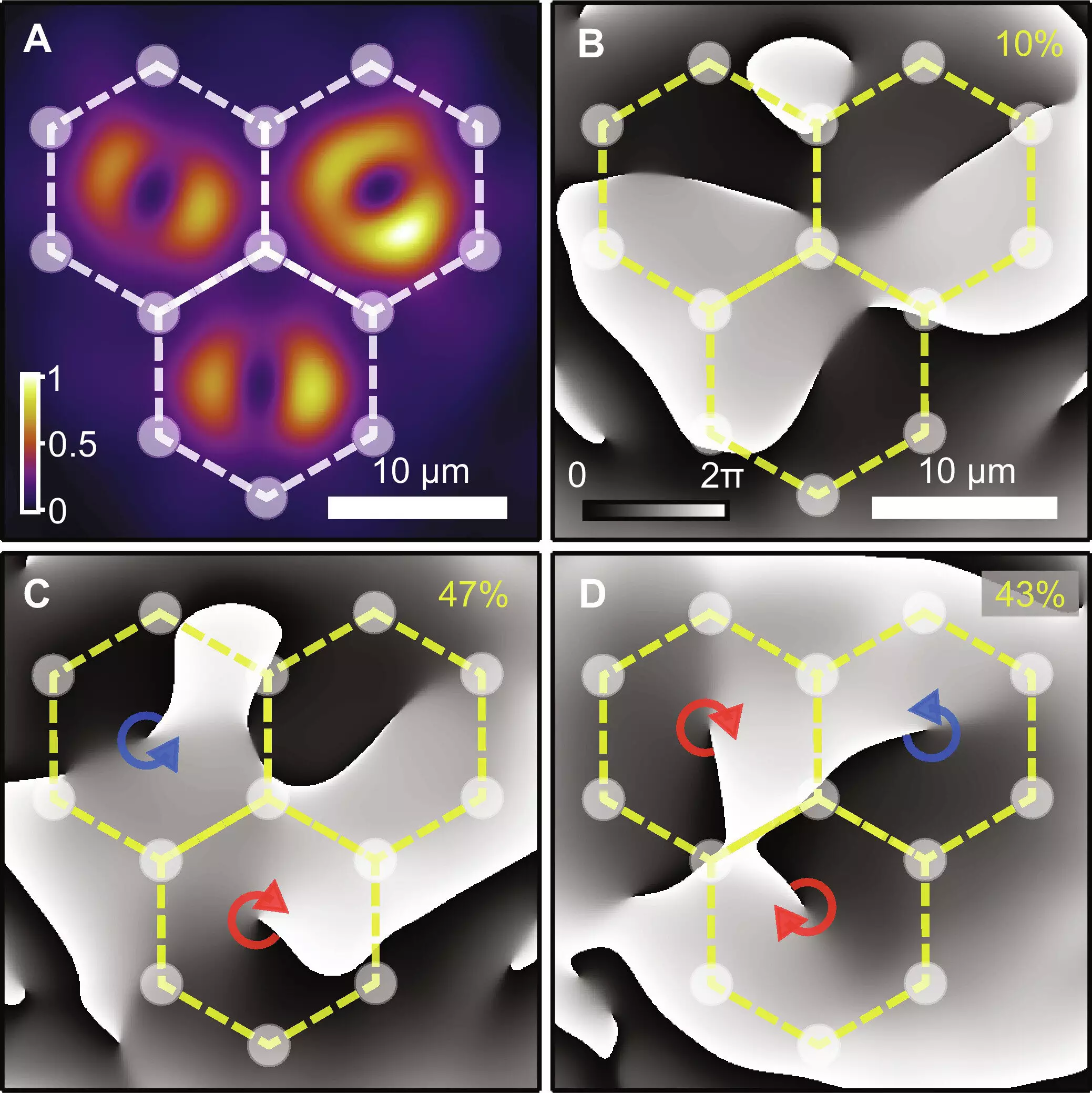Researchers from Skoltech, Universitat Politècnica de València, Institute of Spectroscopy of RAS, University of Warsaw, and University of Iceland recently conducted a study on the spontaneous formation and synchronization of multiple quantum vortices in optically excited semiconductor microcavities. The research, published in Science Advances, explores the behavior of polariton quantum vortices in structured artificial lattices.
The study revealed that polariton quantum vortices in adjacent cells of the optically generated lattices exhibit antiferromagnetic coupling, indicating an opposite topological vortex charge. This unique behavior suggests a new platform for simulating condensed matter systems by leveraging the orbital angular momentum of the polariton condensate.
The experiments were conducted at Skoltech’s Photonics Center’s Hybrid Photonics Laboratory, led by Professor Pavlos Lagoudakis. The researchers utilized a semiconductor planar microcavity, comprising InGaAs quantum wells sandwiched between highly reflective mirrors, to create exciton-polaritons. By optically exciting the microcavity sample with a patterned laser beam, the team managed to form a triangular lattice with 22 cells, each containing a single-charge vortex.
Through statistical analysis of the experimental data, the researchers observed the formation of stable solutions with opposite topological charges in neighboring lattice cells. This phenomenon indicated extended antiferromagnetic order within the triangular lattice of vortices. The study also revealed correlations between the orbital angular momentum of the condensates and the low-energy configurations of the Ising spin Hamiltonian, further supporting the presence of antiferromagnetically coupled vortices.
Skoltech Assistant Professor, Sergey Alyatkin, highlighted the difficulty in analyzing a vast experimental dataset to substantiate their findings. The researchers, including theoretician Dr. Helgi Sigurðsson from the University of Warsaw, faced challenges in measuring the vortex charge and verifying the presence of antiferromagnetic order in the vortex lattice.
The study sheds light on the intriguing behavior of quantum vortices in semiconductor microcavities and their potential applications in simulating condensed matter systems. The findings not only deepen our understanding of polariton condensates but also pave the way for further research into the synchronization and manipulation of quantum vortices in controlled environments.
The research conducted by the collaborative team provides valuable insights into the formation and synchronization of quantum vortices in semiconductor microcavities. By overcoming various challenges and utilizing advanced experimental techniques, the researchers have uncovered a novel behavior of polariton quantum vortices that holds promise for future studies in condensed matter physics.


Leave a Reply